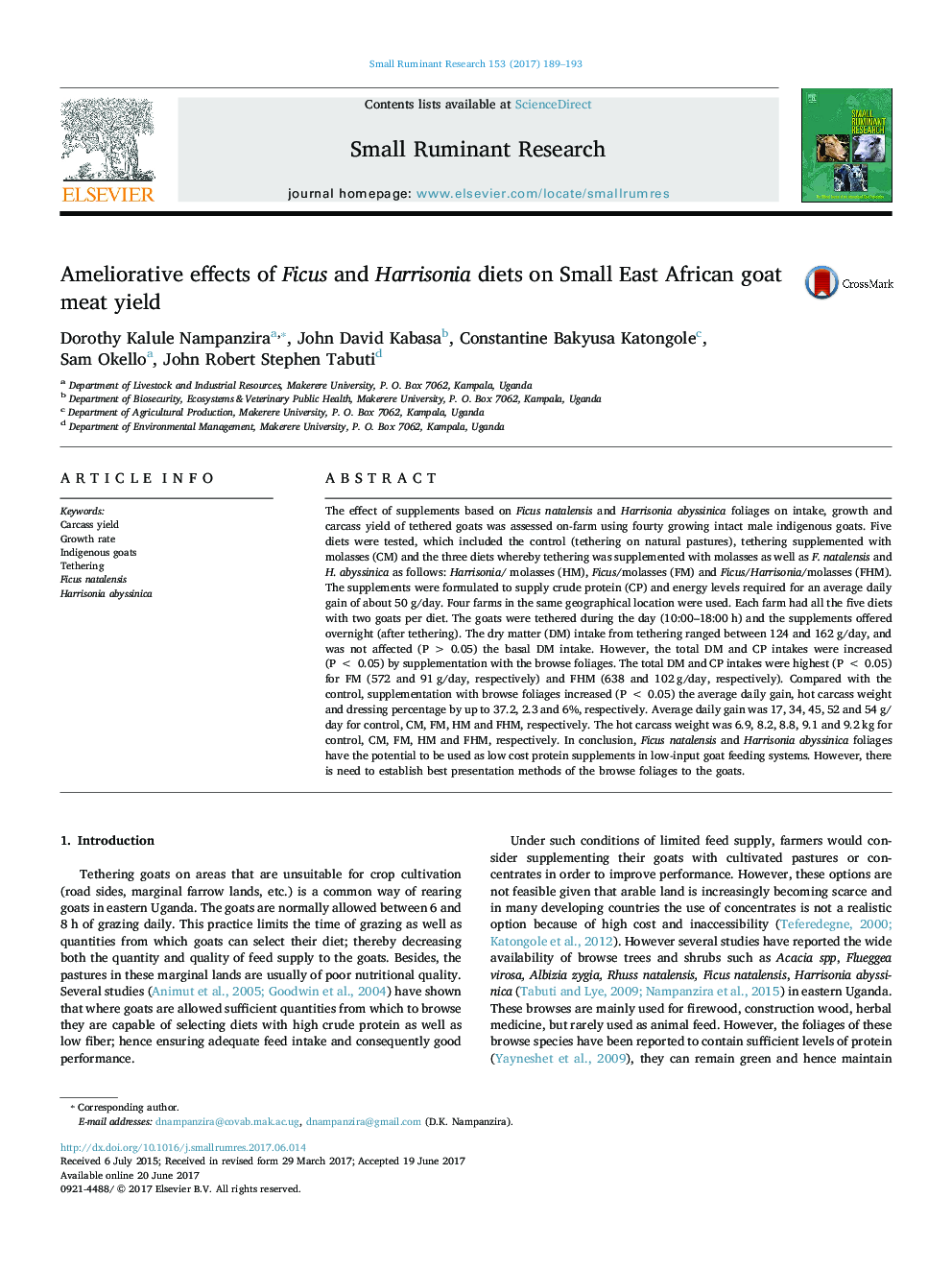| Article ID | Journal | Published Year | Pages | File Type |
|---|---|---|---|---|
| 5544095 | Small Ruminant Research | 2017 | 5 Pages |
â¢Effect of supplementing tethered goats with F. natalensis and H. abyssinica foliage on meat productivity.â¢Supplementation with the browse foliages did not increase average daily gain, hot carcass weight, dressing percentage and carcass grade.â¢The extra CP offered to the goats from the browse foliages was not translated into accretion of carcass tissues.â¢Need to always process the browse foliages to minimize the negative effects of the anti-nutritional factors prior to feeding.â¢These browse foliages have potential to be used as low cost protein supplements to low quality feeds.
The effect of supplements based on Ficus natalensis and Harrisonia abyssinica foliages on intake, growth and carcass yield of tethered goats was assessed on-farm using fourty growing intact male indigenous goats. Five diets were tested, which included the control (tethering on natural pastures), tethering supplemented with molasses (CM) and the three diets whereby tethering was supplemented with molasses as well as F. natalensis and H. abyssinica as follows: Harrisoniaâ molasses (HM), Ficusâmolasses (FM) and FicusâHarrisoniaâmolasses (FHM). The supplements were formulated to supply crude protein (CP) and energy levels required for an average daily gain of about 50Â g/day. Four farms in the same geographical location were used. Each farm had all the five diets with two goats per diet. The goats were tethered during the day (10:00-18:00Â h) and the supplements offered overnight (after tethering). The dry matter (DM) intake from tethering ranged between 124 and 162Â g/day, and was not affected (PÂ >Â 0.05) the basal DM intake. However, the total DM and CP intakes were increased (PÂ <Â 0.05) by supplementation with the browse foliages. The total DM and CP intakes were highest (PÂ <Â 0.05) for FM (572 and 91Â g/day, respectively) and FHM (638 and 102Â g/day, respectively). Compared with the control, supplementation with browse foliages increased (PÂ <Â 0.05) the average daily gain, hot carcass weight and dressing percentage by up to 37.2, 2.3 and 6%, respectively. Average daily gain was 17, 34, 45, 52 and 54Â g/day for control, CM, FM, HM and FHM, respectively. The hot carcass weight was 6.9, 8.2, 8.8, 9.1 and 9.2Â kg for control, CM, FM, HM and FHM, respectively. In conclusion, Ficus natalensis and Harrisonia abyssinica foliages have the potential to be used as low cost protein supplements in low-input goat feeding systems. However, there is need to establish best presentation methods of the browse foliages to the goats.
